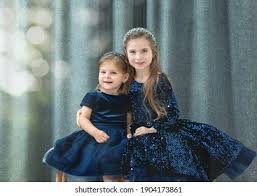When you’ve laid out the initial concepts for your clothing line, the next step is to look at the finer details. These elements will constitute the final product and will give your summer dress for girls a unique touch. As we explained in our guide – How to Launch a clothing brand Line, researching fabrics and trims is an important part of the process.
The fabrics and trims of your garments determine the look and feel of the garment. This option also impacts other phases of your brand, including:
- How clothes fit the body
- Size availability
- The comfort of the fabric
- The way the garment washes
- The durability of fabric and trim
From your first designs to the first sample clothing brand, you will need to consider these aspects along with your fashion brand’s goals and identity.
CHOOSING THE FABRIC BASED ON YOUR BRAND VISION
Whether you are starting up or an established business, the fabric you choose should match the type of brand you want to represent in the eyes of your customers. The example below highlights a set of sectors and the types of materials used to complete the brand image.
Luxury fashion – Leather, organic cotton, silk, cashmere
Affordable Fashion – Cotton, Polyester, Nylon
Sportswear – Technical fabrics such as polypropylene and lycra
Sustainable fashion – Bamboo, linen, jute, hemp
Along with the hundreds of fabric choices available, there are several trims to think about. Below are some examples of common garment trimmings:
- Buttons
- Zippers
- Liners
- Elastics
- Laces
Once you have determined these elements, you will need to include the fabrics and trims in your technical file. By giving your garment manufacturer clothing brand as much detail as possible, you will avoid misunderstandings and mistakes when producing the garments.
DETERMINE THE SUITABILITY AND FUNCTIONALITY OF YOUR CLOTHING
In fact, how you want people to wear your baby girl dresses plays a huge role in how you should source the fabric. If your products are going to have a long lifespan and be used often for physical activity, finding a durable fabric that can be washed over and over is ideal. In contrast, a high-end brand designing evening wear will require vastly different fabric clothing brand standards and specifications.
To help you make your decision, you need to focus on the functional and aesthetic aspects of the fabric. Here are some of the main things to identify when selecting fabrics:
- Washability
- Stretch
- Durability
- Breathability
- Color retention
- Ease of ironing
NOTE: It is best to define exactly what you want from a piece of fabric before committing based on mere aesthetic qualities.
THINGS TO AVOID WHEN SOURCING FABRICS
Finding a suitable fabric can be a daunting task. However, it is always best to approach the process with an open mind. One of the main traps for an emerging designer is to search for the “perfect” fabric. You may never find something that is 100% what you imagined. So be prepared to compromise! The best way to determine if a fabric is right for your clothes is to balance price, continuity, and availability.
Another way to avoid costly mistakes is to ask the right questions. It can be easy to get carried away with the general feeling of how you want the baby swimsuits to look. However, missing key details can complicate production.
STOCK AVAILABILITY
Not all fabrics are available all the time. Some options are popular for many years, others come and go with trends. Checking the type of fabric and its availability is vital for the continuity of your clothing line. There’s nothing worse than having a bestseller only to learn that the factory no longer carries the corresponding fabric. Customers like consistency, so make sure there are guarantees, especially when you’re producing ‘signature’ garments.
EXECUTION DELAY
The delivery time of your fabric is an essential parameter of the production schedule. Some fabrics must be made to order by a fabric factory and therefore may take weeks or months to arrive. Taking this factor into account is crucial for deadlines.
MINIMUM ORDER QUANTITIES
Order quantities may vary by fabric supplier. Some require large orders of bulk materials, while others can meet smaller demands. However, it should be noted that orders of low minimum quantities often cost much more. There are specialist clothing manufacturers that offer order levels as low as 50 pieces.
COSTS
As mentioned above, the quantity ordered often influences the price of the fabric. In addition, different types and origins of materials also have different values. The more complex the fabric is to produce and obtain, the more expensive it is.
FABRIC WIDTH
Fabrics are not often offered in a universal width. Everyone is different, with handmade fabrics offering finer widths while a wholesale supplier will supply wider sections. This aspect will affect the cost and how much you can fit in each section.
HOW TO FIND FABRICS AND TRIMS FOR YOUR BUSINESS?
Discover easy ways to source fabrics for your fashion brand.
DO YOUR RESEARCH
There is a multitude of resources available to start researching fabric suppliers. Getting started online is a great idea, but it’s also a good idea to request samples to get an idea of the type of fabric available.
VISIT TRADE SHOWS
Trade shows are a great way to see an array of fabric suppliers in different niches. These shows offer the opportunity to see fabrics and trim up close to determine the right look for your brand. Participating in trade shows can be a difficult task, especially for beginners. However, researching exhibitors and making a plan before you arrive will help you avoid wasted opportunities.
The most popular shows are Premiere Vision, Textile Forum, and The London Textile Fair. Additionally, some are held twice a year to reflect changing trends and seasons.
CONSIDER A FULL PRODUCTION PACKAGE
If you are a new business looking for help with a range of production aspects, an FPP manufacturer could be an ideal solution. This type of manufacturer will help you throughout the process, from design to final product, and can source fabrics through their many connections. This option often provides a library of materials to choose from to make the production process straightforward.





More Stories
Types of Watches You Can Pawn and What They’re Worth in Australia
Secrets to Perfectly Coordinating Kids’ Outfits
Luxurious Comfort and Style: Exploring Men’s Cashmere Jumpers